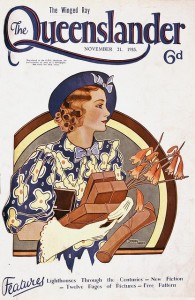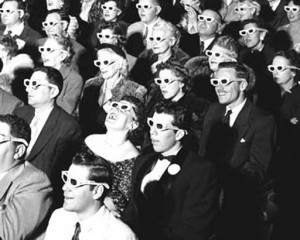Retail and online competition grows
 This year saw China overtake the US as the world’s largest food and grocery market. In 2013 China is expected to surpass Japan as the world’s largest luxury goods market, and by 2016 it is expected to overtake the US to become the world’s largest retail market. By 2022 China is expected to account for around a quarter of the global retail sales generated by the 60 largest markets, twice as much as the US. Urban growth in the emerging third-and fourth-tier cities is expected to be key growth driver.
This year saw China overtake the US as the world’s largest food and grocery market. In 2013 China is expected to surpass Japan as the world’s largest luxury goods market, and by 2016 it is expected to overtake the US to become the world’s largest retail market. By 2022 China is expected to account for around a quarter of the global retail sales generated by the 60 largest markets, twice as much as the US. Urban growth in the emerging third-and fourth-tier cities is expected to be key growth driver.
India, Brazil and Russia are also on the path to becoming retail powerhouses. By 2022 these emerging markets will form four of the six largest markets in the world in US-dollar terms, and perhaps five of the top seven if the Indonesian market continues to grow. In ten years’ time the Indian market alone could be a comparable size to that of Western Europe. And as companies in those countries grow, the largest will undoubtedly seek to make further inroads into Western consumer markets, including via mergers and acquisitions.
In the US, total online retail accounts for between 7 and 10% of the market, depending which research and period you take up, and is likely to rise to about 16% fairly soon. This is being ‘pushed’ by new smartphones and related technologies, and retailers adopting incentives such as unique products / private labels, touch screen kiosks, mobile checkouts and same-day shipment/delivery – and live events featuring celebrities and activities e.g movie and sports personalities, cooking bonus content and rewards programs.
The UK has the highest proportion of online spending in the world, with web purchases accounting for an estimated 13.2% of all retail sales in 2012 (according to the Centre for Retail Research). Forrester, a US-based market research company, is anticipating that between 2011 and 2017 the value of mobile retail transactions will rise eleven-fold across Europe. Although emerging markets have further to go, the rate of growth is even more rapid. Last year China reported that online business-to-consumer transactions increased by 53.7% to reach US$123.2 billion.
Australia is experiencing rapid growth in online consumer sales, currently growing at some 25% per annum. About 5.6% of sales are currently online – with about 75% of those sales being fulfilled by domestic suppliers. The age group through to 30 accounts for over 50% of online sales by/of auction, department stores, fashion, cosmetics and the like. That sector is also the largest by far for all other age groups, but comprises a lesser percentage. While it is not surprising that groceries, liquor and speciality food accounts for larger proportions of older groups’ spending, statistics show that older age groups also account for a relatively high 25% of online spending of these goods. Online spending in NSW is about 34% of the country’s total, well ahead of the other states. Mull that one!
What does this mean for events businesses? Is it branding innovation?
 New strategies are in demand, new innovative ideas that capture changing consumer habits as well as the structural changes in retail and online selling. And with that comes an amazing opportunity for event concepts to take a major position in the branding and selling process, creating new dimensions of experience and affinity to brands and products and overall giving the customer totally new shopping experiences.
New strategies are in demand, new innovative ideas that capture changing consumer habits as well as the structural changes in retail and online selling. And with that comes an amazing opportunity for event concepts to take a major position in the branding and selling process, creating new dimensions of experience and affinity to brands and products and overall giving the customer totally new shopping experiences.
We have a lot to learn from consumer branding knowledge to improve the branding and sales of our own businesses and moreover create a new genre of events that change the total path-to-sales profiles of retailers, and have the ability to lift and renew shopping experiences. And those events may not at all be one-off ‘block-busters’, but a string of seamless events along a branding path through to purchase decisions. This may mean adopting and adapting to new technologies in order to be at the cutting edge of consumer expectations.
The pressures on traditional retailers to find new growth, to improve their efficiencies as well as lower their cost of sales will induce them to explore new means of presentation marketing to their customers. And so open the door to quite new partnerships. Jack Morton research indicates that almost nine in ten participants said the uniqueness and differentiation of brands’ experiences matter. Even better, 78% said they’d pay more for a unique experience. 75% of consumers would actually pay more if they knew the brand they were engaging with would give them a differentiated experience. It’s all about branding and then sales conversion and this is the opportunity for creative events business to exploit – with a very significant growth potential.
Personal experience has the most impact on consumer decisions. A brand experience that provides the opportunity to interact with a product can move a consumer from brand consumption into shopper mode with remarkable speed. Brand experiences go deeper and last longer, meaning that consumers carry experiences into their shopper state. Further, linking experiences with other engagement media in a consumer journey creates a multiplying effect on impact.
In the currently changing environment, retailers need to think about is how their entire brand experience (both in-store and online) can shorten the path to purchase via a differentiated and empowered experience. While online spending grows, according to Forbes, 82% of consumers prefer to shop in-store where they can touch, feel, and interact with the products they’re looking to buy. But the marketplace is intensely competitive. Retailers and product brand owners will increasingly look to differentiate by new means and with new ideas.
This is the exceptional opening for the events industry to move into and for events companies to prove their creative worth.






